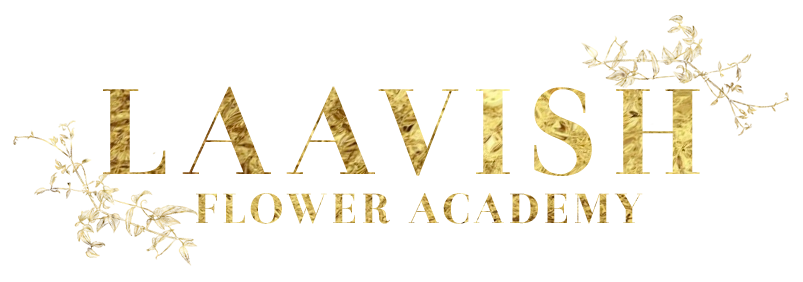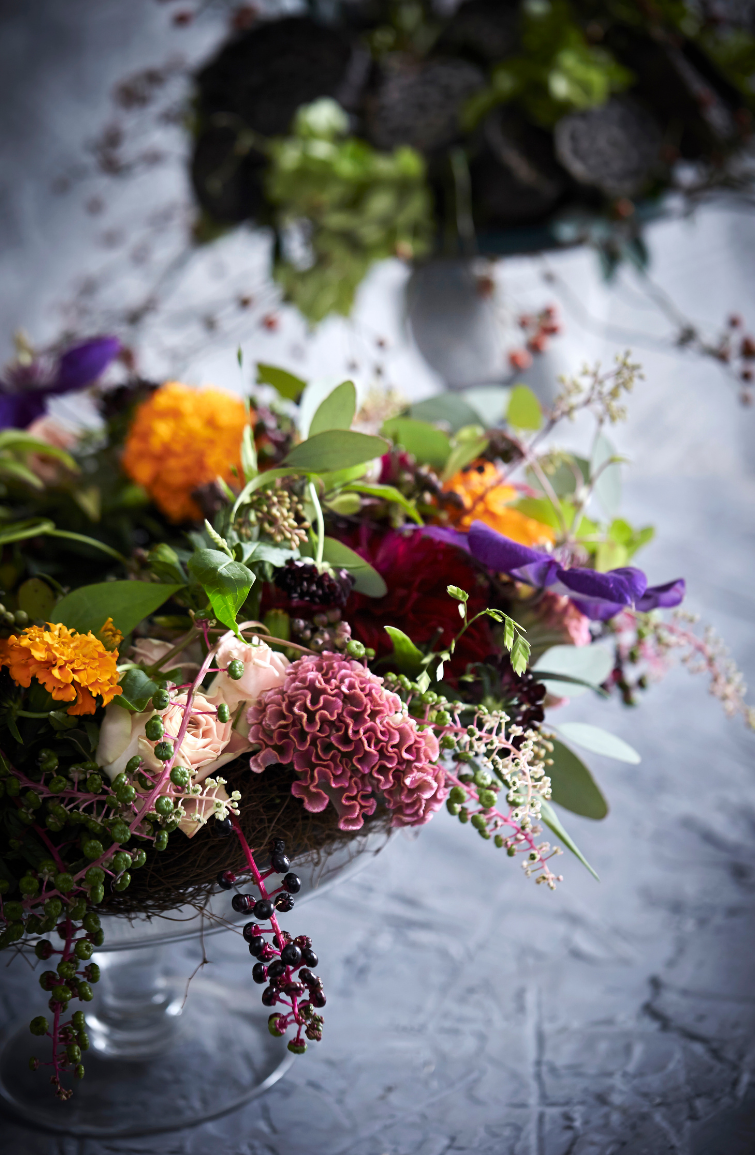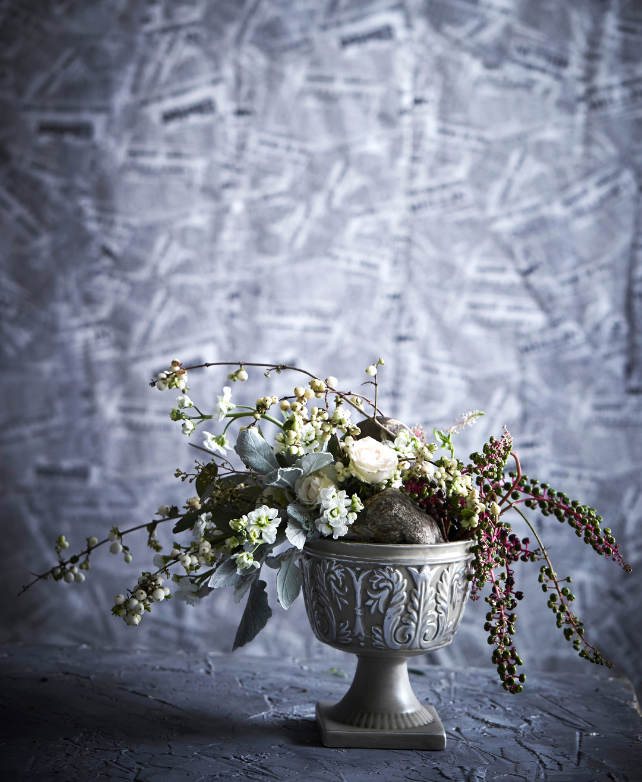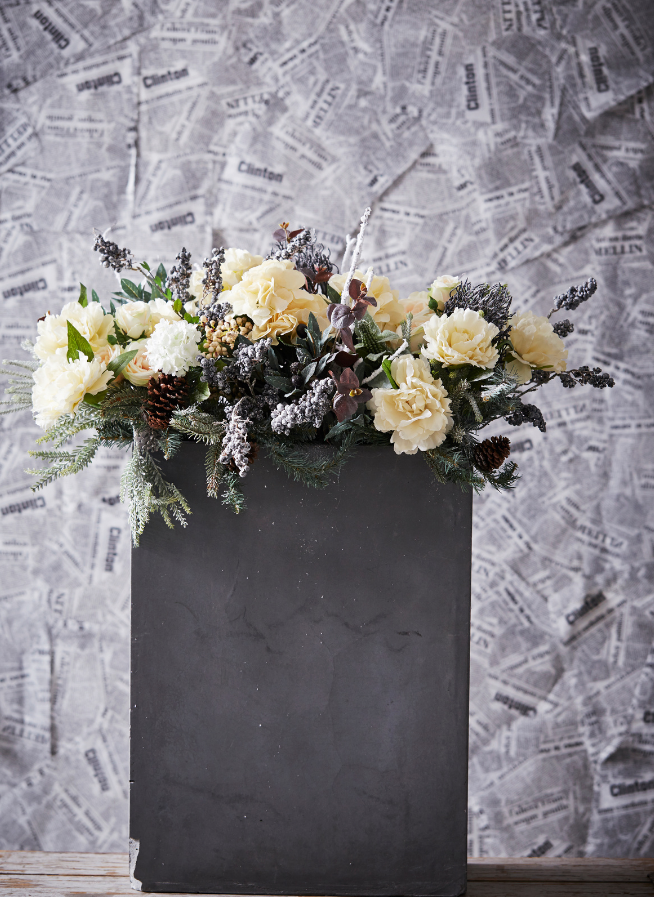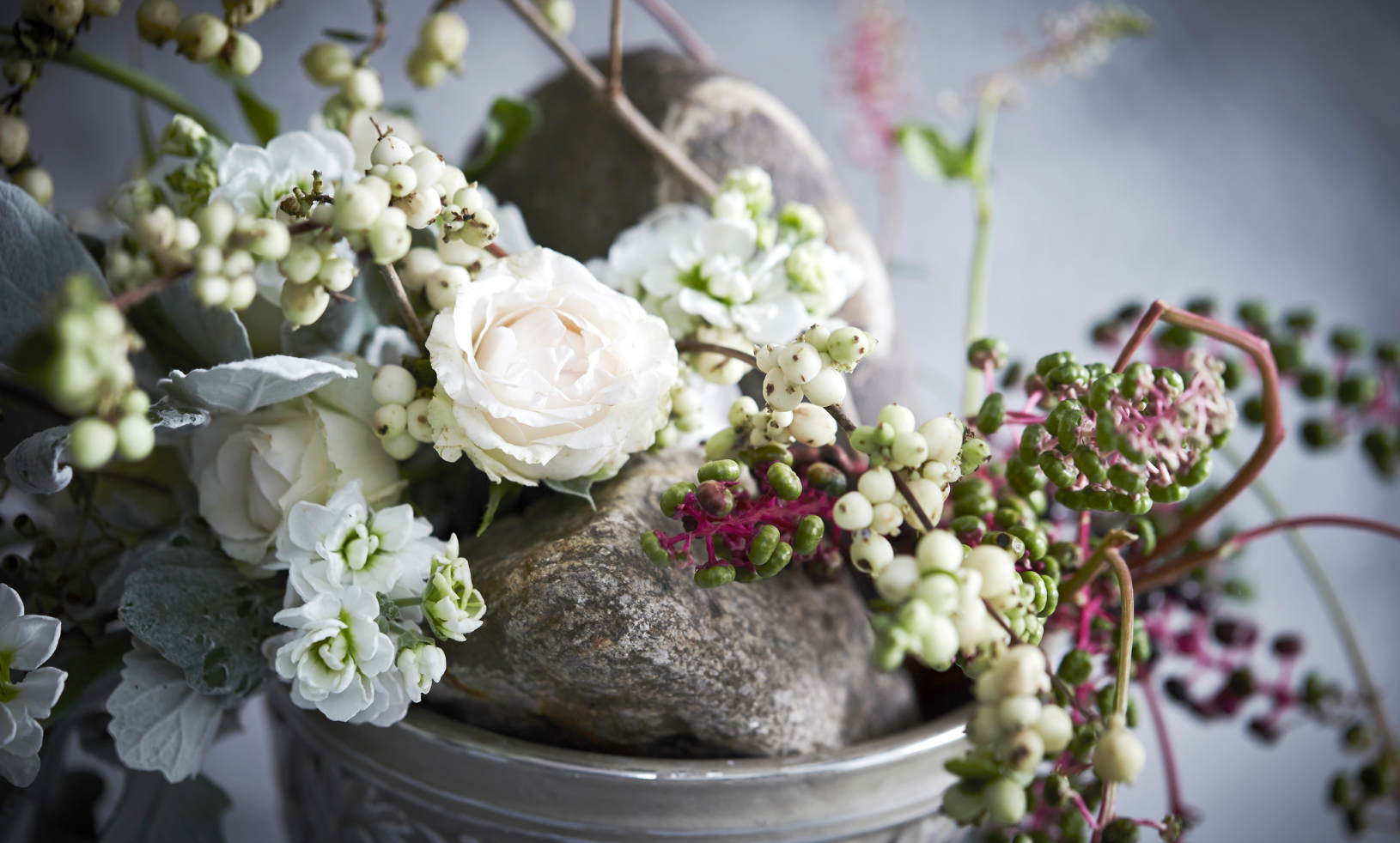Principles of Floral Design
To start your career in a new Industry it can be very hard and confusing.
You have two options; either jump into it and learn the curves of Floristry hands on, or start with theory to help you understand the practises and rules that apply.
“LET TODAY BE THE START OF SOMETHING NEW!”
All beginner students at Laavish Flower Academy, focus on Principles and Elements of Floral Design as these are the major guidelines used by most Florists while designing.
In theory if these ‘Floral’ rules are understood and followed correctly you will be able to compose a Floral Design – with excellence!
Today we will discuss about Principles of Floral design:
Proportion
Balance
Scale
Rhythm
Contrast
Dominance
Harmony
Proportion
Proportion is the pleasing connection between size and shape among objects.
It is the relationship between an arrangement to its container, and the whole design to its setting where it is displayed.
In floral design, three aspects/rules will determine the height and the width of your floral design.
•The location of the arrangement
•The height of the arrangement
•The materials used in the arrangement
Display Area - Location of the arrangement
The design should consistently be in proportion to where its going to be displayed.
The display area could include a room, a table, or sometimes just an individual wearing
the design.
Proportion requires the design to be appropriate and in harmony with its location.
Height of the Arrangement
The height of an arrangement should be at least one and a half times taller than the arrangements container size.
There are some exceptions to this rule:
· You can increase the height of the arrangement to be in proportion with room/venue.
· Increase the height depending on which material you are using.
When designing the arrangement, you must determine the size of the container first.
This is your starting point.
“The beauty of flowers is forever captured in the way
Floral Designers make them a part of our life’s memories.”
Before choosing the container you should always consider four important factors.
· Dimension/size
· Colour
· Material/Texture
· Shape
Glass container is an excellent base for shorter arrangements and dark, heavy containers are perfect fit for taller arrangements.
There is an exception to the height rule
(for centrepieces and horizontal arrangements.)
A centrepiece arrangement should always be low to make sure it does not obstruct the view of persons participating in a dinner conversation.
Flowers and Foliage
Large difference in flower size should be avoided, try using equal or similar size flowers to achieve the perfect proportion.
Balance
Balance in a flower arrangement refers to the arrangement’s equilibrium and equality in weight, both physical and visual.
Balance can be achieved through several different methods.
“each flower is a soul blossoming out to nature.”
PHYSICAL BALANCE
Physical balance is the stability of plant materials within a container.
A properly designed arrangement that has physical balance can stand freely and steadily on its own.
VISUAL BALANCE
Visual balance is the perception of an arrangement being balanced.
For example; weight should be equal on both sides of the central axis.
Visual balance should be cross checked from three aspects: side to side, top to bottom and front to back.
There are two types of visual balance: symmetrical and asymmetrical.
Symmetrical balance :
It has been always present and used in many European Floral Deigns in the past. (formal design)
The design has equal weight and material placements on both sides of its central axis.
Typically, symmetrical arrangements are shown in formal / symmetrical shapes.
( Oval, round, fan, triangle, inverted-T, and vertical arrangements, as well as oval and round centrepieces )
Asymmetrical balance
When a design has material placements and weight that are not equal on both sides of its central axis then it is known to have asymmetrical balance.
It is also called informal design and derives from Asian influences.
Asymmetrical balance is mostly achieved through compensation and counter balancing.
Typically, asymmetrical arrangements are shown in informal / asymmetrical shapes such as: Crescent, Hogarth curve, Fan, Diagonal, Vertical, Ikebana, Scalene, and right Triangle.
“LET FLOWERS UNFOLD BEFORE YOUR EYES.”
ACHIEVING BALANCE
A Floral Designer may use three main techniques to help achieve the balance of their design.
VISUAL WEIGHT
CENTERING
COUNTER BALANCING
Visual weight is how flower’s colour is placed within the design.
Always try to use lighter materials and colours towards the outside of the design and heavier material and colours in the centre towards the inside of the design.
Centring is a technique where we are placing heavier/ dominant plant materials higher in the design.
Counter balancing is how we balance plant materials on one side of a design with aesthetically equal materials on the opposite side.
This technique is fundamental in asymmetrical designs.
Its highly recommended if you want to avoid creating symmetrical design with mirror imaging.
“Be the willdflower in a field of roses.”
Scale
Scale is basically a relationship between flowers, foliage and accessories.
For example; when you are using two flowers that have a great difference in size you must add a flower that acts like a bridge in your design, to bring that size gap between them closer.
To achieve a harmonious design you must choose the correct sizes of your materials within the arrangement.
Rhythm
Rhythm is an expression of movement where a design draws an attention and takes you from one part of the design to another.
The design that is lacking rhythm will lose the interest of the viewers.
As a Florist you want to attract and content the viewers attention, and rhythm of your floral design will do just that.
Rhythm is the visual flow of your design and can unite, direct, highlight and set the dynamics in your design.
There are two kinds of rhythms; regular and free.
Regular sometimes called repeated rhythm, is present when design materials are placed at regular intervals, from top to bottom of the arrangement.
The flow is equal all the way through the design.
Free or variable rhythm is created with unstructured materials yet with subtle flowing movement.
There are Five techniques that can be used to achieve both regular and free rhythm:
TRANSITION -When colours and materials are linked in form and shape
RADIAL CONSTRUCTION - When all lines are coming from the central point.
CONTINUATION - The line direction that flows through the design.
Can be achieved by colour, type of flower of material.
REPETITION -When flowers or materials are set in rhythmic patterns.
VARIATION -Is similar to radial construction but with lines at different lengths. (hot/cold effect)
“I must have flowers always, always.”
Contrast
Contrast describes objects that have striking differences beyond mere variety or diversity.
Contrast takes variety to a higher degree.
Dominance
Dominance in a design means that one design element is more prevalent or noticeable, thereby capturing interest of the viewer.
The use of dominance emphases one area of your design above the others, so the viewer can notice what is important in the design.
Interest and attention are captured when one feature dominates and others are secondary.
Dominance can be achieved by using dominant plant material, an emphasized design element, a distinct style of design, a theme, or a focal point.
In a traditional Floral Design a dominant feature is the area with the greatest impact.
Some floral design can have more than one focal point but there must be one feature that stands out amongst them even more.
“EVERTHING BEGINS WITH AN IDEA.”
Large flowers, coarse-textured flowers, and bright coloured flowers often appear as dominant floral elements.
In a floral display, the dominant feature should also not be too strong, so it does not take the view away from the whole design.
On the other hand it cannot be to weak so the view can get lost, and the viewers lose their interest.
FOCAL POINT
A focal point is the centre of interest of your design.
It can be created in several different ways.
Not all arrangements need a focal point or centre of interest.
If, however, one is intended, there are a number of methods to create one:
• Use of large flowers
• Use of special form flowers, such as orchids
• Use of dark shades
• Variation of concentration of plant material
• Use of framing materials
• Use of strong colour contrast
• Radiation of plant materials to a particular area
• Use of accessories
Use of unusual features; such as weathered wood
(it becomes the dominant element of the design)
“LET YOUR DREAMS BLOSSOM.”
Harmony
When you are using all of the Principles and Elements of design in the correct way, this is when harmony is achieved.
It is an agreement between all parts of your floral design.
I really hope you enjoyed this Blog, in our next blog I will discuss in detail about the Elements of Floral Design.
Xx
